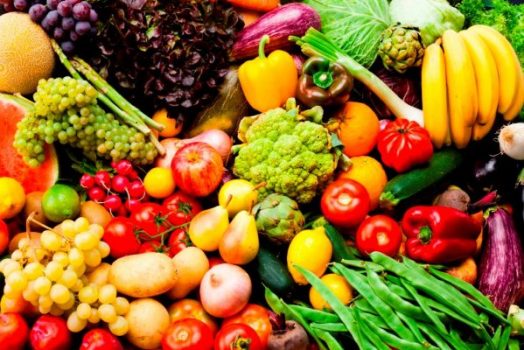Choosing the right food gives you a healthy and fit body. There are many healthy foods, but there are some that are the best. Check out the article we found at Articles Mercola.
1. Avocado
Avocados, which are actually classified as a fruit, are low in fructose and rich in healthy monounsaturated fat and potassium. Research has confirmed the avocado’s ability to benefit vascular function and heart health.
Personally, I eat a whole avocado virtually every day, which I usually put in my salad. This increases my healthy fat and calorie intake without raising my protein or carbohydrate intake by much.
Avocados are also very high in potassium and will help balance your vitally important potassium-to-sodium ratio. Avocados also provide close to 20 essential health-boosting nutrients, including fiber, vitamin E, B-vitamins, and folic acid. Besides eating them raw, you can use avocado as a fat substitute in recipes calling for butter or other oils.
2. Swiss Chard
Swiss chard belongs to the chenopod food family, along with beets and spinach. It’s an excellent source of vitamins C, E, and A (in the form of beta-carotene) along with the minerals manganese and zinc. When you eat Swiss chard, you get a wealth of antioxidant and anti-inflammatory benefits.
In addition, Swiss chard contains a flavonoid called syringic acid, which may help regulate blood sugar and provide benefits to those with diabetes, along with kaempferol, a flavonol that may help fight cancer and lower your risk of chronic diseases including heart disease.
3. Garlic
Garlic is rich in manganese, calcium, phosphorus, selenium, and vitamins B6 and C, so it’s beneficial for your bones as well as your thyroid. It’s thought that much of garlic’s therapeutic effect comes from its sulfur-containing compounds, such as allicin, which are also what give it its characteristic smell.
Other health-promoting compounds include oligosaccharides, arginine-rich proteins, selenium, and flavonoids. There is research demonstrating garlic’s effects for more than 160 different diseases. In general, its benefits fall into four main categories:
- Reducing inflammation (reduces the risk of osteoarthritis and other disease associated with inflammation
- Boosting immune function (antibacterial, antifungal, antiviral, and antiparasitic properties)
- Improving cardiovascular health and circulation (protects against clotting, retards plaque, improves lipids, and reduces blood pressure)
- Toxic to 14 kinds of cancer cells (including brain, lung, breast, gastric, and pancreatic)
In addition, garlic may be effective against drug-resistant bacteria, and research has revealed that as allicin digests in your body, it produces sulfenic acid, a compound that reacts with dangerous free radicals faster than any other known compound. This is one of the reasons why I named garlic as one of the top seven anti-aging foods you can consume.
4. Sprouts
Sprouts may offer some of the highest levels of nutrition available, including vitamins, minerals, antioxidants, and enzymes that help protect against free radical damage.
The compound glucoraphanin also appears to have a protective effect against toxic pollutants by improving your body’s ability to eliminate or excrete them. Glucoraphanin has also been shown to protect against cancer.
Sprouts are far less expensive (90 percent or greater) if made at home rather than purchased, so I strongly recommend growing your own sprouts. Try broccoli sprouts, watercress sprouts, and sunflower sprouts, for starters.
5. Mushrooms
Aside from being rich in protein, fiber, vitamin C, B vitamins, calcium, and minerals, mushrooms are excellent sources of antioxidants. They contain polyphenols and selenium, which are common in the plant world, as well as antioxidants that are unique to mushrooms.
In addition, some of the most potent immunosupportive agents come from mushrooms, and this is one reason why they’re so beneficial for both preventing and treating cancer.
Long-chain polysaccharides, particularly alpha and beta glucan molecules, are primarily responsible for the mushrooms’ beneficial effect on your immune system. In one study, adding one or two servings of dried shiitake mushrooms was found to have a beneficial, modulating effect on immune system function.
6. Kale
Just one cup of kale will flood your body with disease-fighting vitamins K, A, and C, along with respectable amounts of manganese, copper, B vitamins, fiber, calcium, and potassium. With each serving of kale, you’ll also find more than 45 unique flavonoids, which have both antioxidant and anti-inflammatory benefits.
Kale is also a good source of cancer-fighting sulforaphane and indole-3-carbinol. To date, kale has been found to lower the risk of at least five types of cancer, including bladder, breast, colon, ovary, and prostate. The glucosinolates in kale and other cruciferous vegetables break down into products that help protect DNA from damage.
7. Spinach
Spinach is rich in vitamins, minerals, and antioxidants, including folate, vitamin A, iron, potassium, calcium, zinc, and selenium. Also contains flavonoids that may help protect your body from free radicals, while offering anti-inflammatory benefits and antioxidant support.
8. Collard Greens
Collard greens are a close cousin to kale and they are, nutritionally, very similar. Rich in vitamin K and phytonutrients – caffeic acid, ferulic acid, quercetin, and kaempferol – collard greens help lower oxidative stress in your cells while fighting inflammation. Collard greens contain glucosinolates called glucobrassicin that can convert into an isothiocyanate molecule called indole-3-carbinol, or I3C, a compound with the ability to activate and prevent an inflammatory response at its earliest stage.
Other phytonutrients in collard greens, specifically diindolylmethane and sulforaphane, have been clinically proven to combat breast, prostate, ovarian, cervical, and colon cancer cells. Help prevent their growth and even help prevent them from forming in the first place. Also noteworthy, collard greens are especially high in fiber, with more than 7 grams per cup, making it ideal for digestive support. They’re also particularly useful for maintaining healthy cholesterol levels.
9. Tomatoes
Tomatoes—especially organic tomatoes—are packed with nutrition, including a variety of phytochemicals that boast a long list of health benefits. An excellent source of lutein, zeaxanthin, and vitamin C. As well as vitamins A, E, and the B vitamins, potassium, manganese, and phosphorus. Some lesser-known phytonutrients in tomatoes include:
- Flavonols: rutin, kaempferol, and quercetin
- Flavonones: naringenin and chalconaringenin
- Hydroxycinnamic acids: caffeic acid, ferulic acid, and coumaric acid
- Glycosides: esculeoside A
- Fatty acid derivatives: 9-oxo-octadecadienoic acid
Also a particularly concentrated source of lycopene. A carotenoid antioxidant that gives fruits and vegetables like tomatoes and watermelon a pink or red color. Antioxidant activity has long been suggested to be more powerful than other carotenoids. Such as beta-carotene, and research suggests it may significantly lower your risk for stroke and cancer.
10. Cauliflower
One serving of cauliflower contains 77 percent of the recommended daily value of vitamin C. It’s also a good source of vitamin K, protein, thiamin, riboflavin, niacin, magnesium, phosphorus, fiber, vitamin B6, folate, pantothenic acid. Good source of choline, a B vitamin known for its role in brain development. Contains a wealth of anti-inflammatory nutrients to help keep inflammation in check, including I3C. Which may operate at the genetic level to help prevent the inflammatory responses at its foundational level.
Cauliflower also helps your body’s ability to detoxify in multiple ways. It contains antioxidants that support Phase 1 detoxification along with sulfur-containing nutrients important for Phase 2 detox activities. The glucosinolates in cauliflower also activate detoxification enzymes. It’s a rich source of fiber, as well, and has significant digestive benefits. Adding to cauliflower’s appeal is its extreme versatility. You can eat it raw, add it to salads, or use it in your cooking.
Next Article: How To Safely Clean Your Fruits & Vegetables
Read Full Article: 30 Healthiest Foods Of All Time







Recent Comments